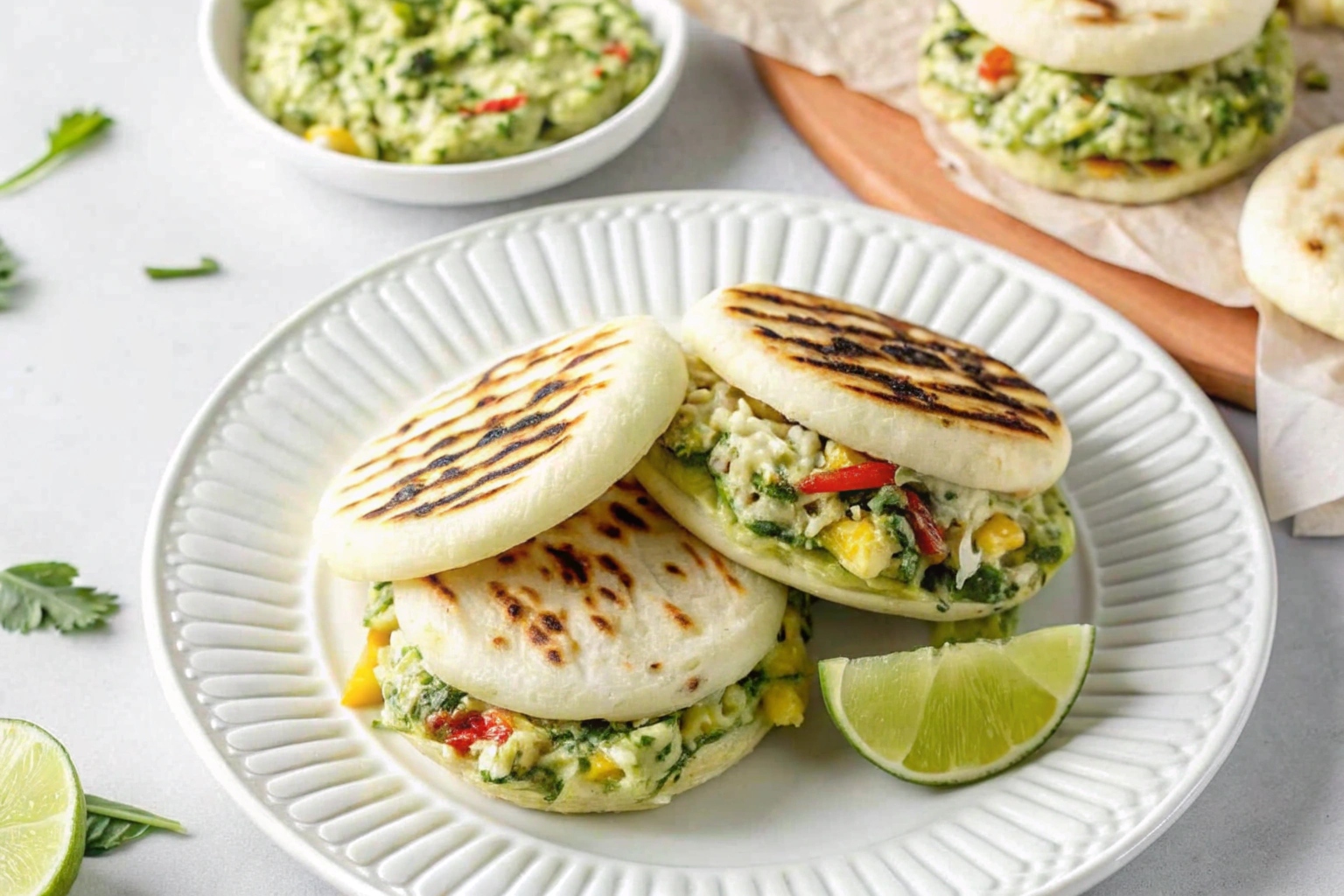Few dishes capture the heart and soul of Venezuelan cuisine like the Reina Pepiada. This iconic arepa, named after a beauty queen, combines the simplicity of pre-cooked cornmeal arepas with the luxurious creaminess of a chicken and avocado filling.
The dish is a celebration of flavors, textures, and the rich cultural heritage of Venezuela. Whether you’re discovering it for the first time or rekindling fond memories of home, the Reina Pepiada promises to transport your taste buds straight to the bustling streets of Caracas or a warm family kitchen.
In this guide, we will dive deep into its history, preparation, and the secrets to perfecting this culinary gem. From choosing the right arepa flour to crafting the ultimate filling, you’ll learn everything needed to master the Reina Pepiada and understand why it holds such a cherished place in Venezuelan hearts.
Cultural Significance of Reina Pepiada
The Reina Pepiada is more than just a popular Venezuelan dish—it’s a symbol of national pride and culinary creativity. Its name, which translates to “Curvy Queen,” pays homage to Susana Duijm, the first Venezuelan to win the Miss World title in 1955. This savory arepa filled with a creamy chicken and avocado mixture represents both the beauty of Venezuelan women and the richness of its cuisine. Today, it is a staple in Venezuelan households and a favorite dish served in areperas (arepa shops) worldwide.
Ingredients Overview
Crafting the perfect Reina Pepiada starts with fresh, high-quality ingredients. Here’s what you’ll need:
- Arepa Flour (Masa Arepa): Pre-cooked cornmeal is essential for making traditional Venezuelan arepas. Popular brands include Harina PAN.
- Chicken: Chicken breasts or thighs work well. Rotisserie chicken is a convenient alternative.
- Avocado: Use ripe avocados for a creamy texture.
- Mayonnaise: A tablespoon or two adds a velvety richness to the filling.
- Lime Juice: Freshly squeezed lime juice enhances the flavor.
- Salt & Pepper: To season both the arepas and the filling.
- Optional Additions: Cilantro, onions, or a pinch of black pepper can elevate the dish.
Chicken and Avocado Filling
The heart of Reina Pepiada lies in its filling. The combination of shredded chicken and creamy avocado creates a flavor-packed experience that pairs perfectly with the crispy arepa exterior.
Cooking and Shredding the Chicken
Start by boiling chicken breasts or thighs in water seasoned with salt, a white onion, and a pinch of black pepper. Cook for about 15-20 minutes, then shred the chicken into fine strands using a fork. For an even easier option, use shredded rotisserie chicken.
Preparing the Avocado Mixture
In a medium bowl, mash ripe avocados with a fork until smooth. Mix in a tablespoon of mayonnaise, fresh lime juice, and a pinch of salt. For added flavor, incorporate finely chopped cilantro or diced onions. Combine the shredded chicken with the avocado mixture, creating a creamy, well-seasoned filling.
Differences Between Masarepa and Masa Harina
One common question when making arepas is the distinction between masarepa and masa harina. Masarepa is pre-cooked cornmeal used specifically for making arepas. It yields a soft dough perfect for shaping and cooking. In contrast, masa harina is a raw corn flour used for tortillas and tamales, and it cannot be substituted for masarepa in arepa recipes.
Selection of Arepa Flour
When selecting arepa flour, look for pre-cooked cornmeal labeled as “arepa flour” or “masarepa.” Harina PAN is a trusted brand in Venezuelan households. Ensure the flour is fresh to achieve the best texture and flavor in your arepas.
How to Make Arepas
Making arepas is a straightforward process, but achieving the perfect texture requires attention to detail.
Preparation of Arepa Dough
- In a medium bowl, combine 2 cups of arepa flour with a pinch of salt.
- Gradually add 2-2.5 cups of warm water, mixing with your hands until a soft dough forms.
- Let the dough rest for 5 minutes to hydrate fully.
- Divide the dough into small balls and flatten them into disks about 4 inches in diameter.
Cooking Methods for Arepas
- Stovetop: Heat a nonstick skillet or cast-iron skillet over medium-high heat. Cook the arepas for 4-5 minutes on each side until golden brown and crisp.
- Oven: After stovetop cooking, place the arepas on an oven rack in a 350°F oven for 10-15 minutes to ensure they cook through.
- Grill: For a smoky flavor, grill the arepas until brown in spots.
Making the Perfect Reina Pepiada Filling
Once your arepas are ready, it’s time to assemble the Reina Pepiada. Split the warm arepas open with a knife and generously fill them with the chicken and avocado mixture. Serve immediately for the best taste.
Tips for Perfecting Your Arepas
Texture and Flavor Enhancements
- Hydration: Ensure the dough is neither too wet nor too dry. It should be pliable and smooth.
- Flavor Boosters: Add a pinch of kosher salt or fresh ground black pepper to the dough for a subtle flavor.
- Crispy Exterior: Cook arepas on medium heat for a golden brown crust.
Storage and Reheating Guidelines
Store cooked arepas in an airtight container in the refrigerator for up to three days. Reheat in a nonstick skillet or a 350°F oven to restore their crispness.
Variations of Reina Pepiada
Vegetarian Alternatives
Replace chicken with black beans or tofu for a vegetarian-friendly version. Mash the beans or crumble the tofu before mixing with the avocado filling.
Regional Differences in Ingredients and Preparation
In some regions, Reina Pepiada fillings include additional spices or ingredients like diced tomatoes. Colombian arepas, while similar, tend to be thinner and sweeter, offering a different take on the classic recipe.
Common Questions
Are Arepas Gluten-Free?
Yes, arepas are naturally gluten-free when made with masarepa, as it contains only corn.
What’s the Difference Between Venezuelan and Colombian Arepas?
Venezuelan arepas are thicker and often stuffed with savory fillings, while Colombian arepas are thinner and sometimes served with cheese or butter.
Personal Anecdotes and Memories
Growing up in a Venezuelan household, Reina Pepiada was a weekend staple. The aroma of freshly cooked arepas and the creamy avocado filling brought the family together around the kitchen table. It’s a dish that carries the warmth of home and the legacy of Venezuelan culinary heritage.
Conclusion: Embracing the Flavor of Reina Pepiada
The Reina Pepiada is more than a dish; it’s a celebration of Venezuelan culture and flavor. Whether you’re recreating it for a family gathering or trying it for the first time, its creamy chicken and avocado filling paired with crispy arepas are sure to impress. Embrace the curvy queen of Venezuelan cuisine and enjoy every bite of this timeless classic.
If you enjoy exploring culturally rich recipes, you might also like this German Potato Soup, which showcases Germany’s culinary traditions.

